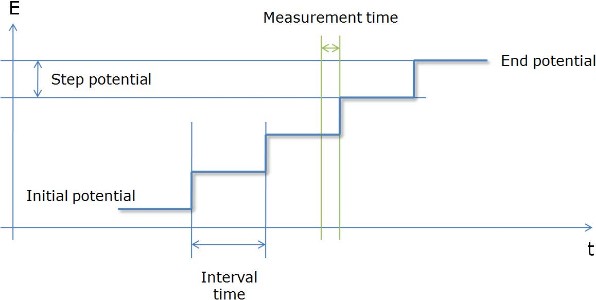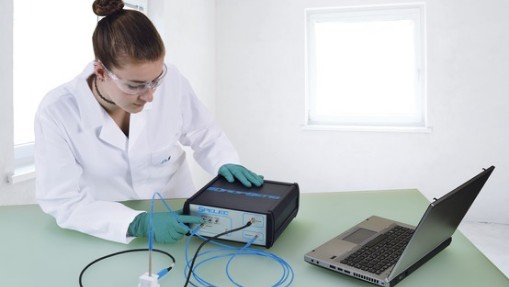Modular Systems
Expandable Modules with Advanced Capabilities
The default configurations of commercial potentiostats/galvanostats can be limiting for performing cutting-edge electrocatalysis R&D.
Fortunately, Metrohm Autolab’s modular instruments can be expanded to increase the capabilities of your lab for characterizing your novel electrocatalysts:

Bipotentiostat
A bipotentiostat is necessary to run RRDE experiments or other tandem electrochemical techniques.
True analog scanning
Digital potentiostats dominate the commercial market and prevent you from applying a true analog waveform. These instruments sample current after non-Faradaic (capacitive) charges have decayed. For fast electrocatalytic charge-transfer processes, this means that some of your vital Faradaic signal is also removed from the data. By adding the true analog scanning module, you can be sure that you are measuring the true performance of your rapid electrocatalyzed processes.
Fast sampling
Studying fast kinetic processes also requires you to sample data quickly. You can also include or add an ultra-fast sampling module to your modular PGSTAT system which provides sampling rates from 50 kSamples/s to 10 MSamples/s. In combination with analog scanning, you can perform fast-scan cyclic voltammetry up to 250 kV/s.
Electrochemical impedance spectroscopy (EIS)
EIS is a powerful technique to analyze and model each discrete electrochemical process in your cell. This alternating-current (AC) technique has widespread implications for a variety of applications such as extracting charge-transfer resistances at your catalytic surface. A frequency response analyzer for performing EIS can be added to enable you to add EIS to your research projects.
Auxiliary probes
This module allows you to collect time-resolved pH and temperature data during your main electrochemical experiment. You can see the effect of reaction products on the solution pH or pX (for other ion-selective probes), or you can see the in-situ temperature as you monitor its effect on your catalysts’ performance.

Integrated Spectroelectrochemistry Systems
Spectroelectrochemistry involves the use of in-situ spectroscopic techniques during an electrochemical experiment. In the case of photocatalysts, the incident light on the catalyst surface can be controlled as you scan, hold, or pulse a potential bias and measure the resulting current. Alternatively, electrocatalysis involving chromophoric species or surface plasmons can also benefit from time-resolved monitoring of the UV-Vis or NIR spectrum.
Raman spectroelectrochemistry is also a powerful technique to characterize the surface of your catalyst as it relates to ligand encapsulation, surface functionalization, or surface bonding of products or intermediates. Even for heterogeneous catalysts in solution, electrodepositing a metal film to induce a Raman surface-enhanced Raman spectroscopy (SERS) effect might allow you to increase the sensitivity for detecting the bonding interactions at the electrode surface.
